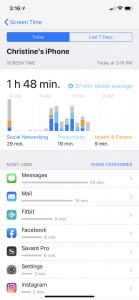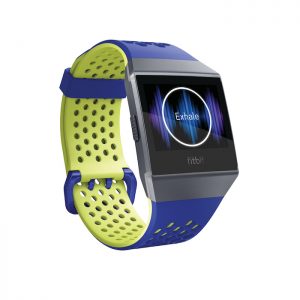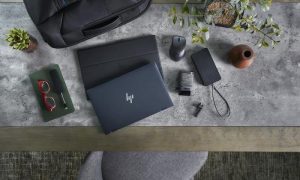Achieving a good work-life balance is one of the toughest challenges workers face today. With the lines being blurred between work and personal time thanks to the proliferation of mobile devices, flexible schedules, and work-from-home options, it is harder than ever to balance work obligations with family and personal time.
Ironically, while technology allows for greater work flexibility so employees can go to their child’s soccer tournament during the day, for example, then catch up on work at night, it also leaves many furiously responding to e-mails at the dinner table, or accepting urgent work calls on the weekends.
The Canadian Mental Health Association (CMHA) says that more than half (58%) of Canadians report “overload” associated with their roles at work, at home, with family and friends, relating to physical health, and volunteer and community service.
Recognizing this battle, and how it can contribute to employee stress, many new technologies are incorporating features to help workers better manage their time and recognize when it’s time to stop work and enjoy time off. Here’s a selection of some of the most interesting ones.
Screen Time
 Most of the latest smartphones come with screen time features that help you monitor and limit the time you spend using your mobile device. In the iPhone, for example, you can see how much time you spend on the device each day, broken down by the apps you use most, like social networking, productivity, and e-mails, and even which apps send the most notifications. You can schedule downtime where only apps you choose as well as phone calls are available. You can also set time limits for apps. While it’s a feature parents love to use for kids, it’s a great way to help limit yourself, too. Or, at the very least, gauge how much time you spend on your phone every day, what you do most often, and work on reducing the duration over time.
Most of the latest smartphones come with screen time features that help you monitor and limit the time you spend using your mobile device. In the iPhone, for example, you can see how much time you spend on the device each day, broken down by the apps you use most, like social networking, productivity, and e-mails, and even which apps send the most notifications. You can schedule downtime where only apps you choose as well as phone calls are available. You can also set time limits for apps. While it’s a feature parents love to use for kids, it’s a great way to help limit yourself, too. Or, at the very least, gauge how much time you spend on your phone every day, what you do most often, and work on reducing the duration over time.
The Google Pixel smartphone has a similar feature called Digital Wellbeing, which also tells you how much time you spend in certain apps each day, lets you set a Wind Down mode, manage notifications, and limit interruptions through Do Not Disturb.
CMHA encourages workers to only check e -mails twice a day then shut off the e-mail program, or at least notifications, to avoid being distracted. If this isn’t possible, at least consider a period of time when you do not make yourself available, like during dinnertime, or from 8 p.m. to 11 p.m. and on weekends.
Relax App

Fitbit Ionic product render
Using a smartwatch like the Fitbit Ionic, you can activate the Relax app that forces you to take some time for yourself, simply breathing to calm you down. Select it and you’ll be guided through a two-minute personalized breathing session where you’re encouraged to take slow, deep breaths, following a circle on screen as you inhale and exhale. The watch emits slight, calming vibrations on your wrist, in sync with your breathing. It might only be two minutes away from work but do this a few times a day and it can help you achieve a little more balance in your life.
Devices like Fitbit smartwatches, and those from other brands as well, also include Reminders to Move that will give you a gentle nudge when you’ve been sitting too long, or remind you of how many steps you have left to complete that hour in order to reach your daily step goal.
HP Workwell Personal Well-Being Software
 Found in the new HP Dragonfly Elite convertible laptop, this software is a neat way to help remind you to take breaks. In addition to coaching you to do just that, it also provides productivity tips. The idea is to help you develop healthy working habits. It collects data about your computer use, work habits, and potential stressors, assesses the situation, then calculates and provides recommendations on how to improve. It might encourage you to take micropauses, do some exercise so you’re in better shape for when you do get home, or simply advise that it’s time to put down the computer altogether.
Found in the new HP Dragonfly Elite convertible laptop, this software is a neat way to help remind you to take breaks. In addition to coaching you to do just that, it also provides productivity tips. The idea is to help you develop healthy working habits. It collects data about your computer use, work habits, and potential stressors, assesses the situation, then calculates and provides recommendations on how to improve. It might encourage you to take micropauses, do some exercise so you’re in better shape for when you do get home, or simply advise that it’s time to put down the computer altogether.
CMHA recommends that workers take at least a 10-minute break every two hours, and, at the end of each day, set priorities for the next. This helps you determine what you can achieve in the available time and avoid overextending yourself such that work bleeds into personal time, impeding your ability to achieve a healthy work-life balance.
More articles on health and wellness



